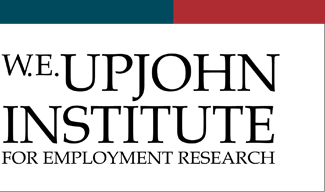-

Long-Term Care in the United States: History, Financing, and Directions for Reform
George A. (Sandy) Mackenzie
2022This book is a concise survey of the development of U.S. long-term care and its financing, with comparisons with other rich countries. It also includes a brief comparative account of the impact of the COVID-19 pandemic in the United States and several other countries. The study finds much that is amiss with American long-term care and proposes three sets of progressively more ambitious reforms.
-

Making Sense of Incentives: Taming Business Incentives to Promote Prosperity
Timothy J. Bartik
2019In evaluating incentives, everything depends on the details: how much in incentives it takes to truly cause a firm to locate or expand, the multiplier effects, the effects of jobs on employment rates, how jobs affect tax revenue versus public spending needs. Do benefits of incentives exceed costs? This depends on the details. This book is about those details. What magnitudes of incentive effects are plausible? How do benefits and costs vary with incentive designs? What advice can be given to evaluators? What is an ideal incentive policy? Answering these questions about incentives depends on a model of incentive effects, which this book provides.
-

Unemployment Insurance Reform: Fixing a Broken System
Stephen A. Wandner, Editor
2018The Unemployment Insurance (UI) system is a lasting piece of the Social Security Act which was enacted in 1935. But like most things that are over 80 years old, it occasionally needs maintenance to keep it operating smoothly while keeping up with the changing demands placed upon it. However, the UI system has been ignored by policymakers for decades and, say the authors, it is broken, out of date, and badly in need of repair.
Stephen A. Wandner pulls together a group of UI researchers, each with decades of experience, who describe the weaknesses in the current system and propose policy reforms that they say would modernize the system and prepare us for the next recession. Contributors include: David E. Balducchi, Christopher J. O'Leary, Suzanne Simonetta, Wayne Vroman, and Stephen A. Wandner.
-

Extending Work Life: Can Employers Adapt When Employees Want to Delay Retirement?
Robert L. Clark and Melinda Sandler Morrill
2017Aging men and women are increasingly remaining in the labor force. Most often the reason for this is that they need to work additional years in order to be able to support an increasing number of years in retirement. This leaves employers scrambling for ways to adapt to a growing number of retirement-aged workers. Clark and Morrill provide a thorough assessment of the costs and benefits of accommodating later retirement ages, and they describe options employers may use to create some new form of employment contract with aging workers.
The most prominent issues employers with aging workers face are declining productivity, rising labor and benefits costs, and a suboptimal age distribution of their workforces. According to the authors, employers could respond to these issues by finding new ways to accommodate older workers with, for instance, phased retirement and return-to-work policies. But the success of such policies also depends on tax policies and whether government-provided retirement benefits could be redesigned to play a role in a newly-defined employment relationship.
-

Workers' Compensation: Analysis for Its Second Century
H. Allan Hunt and Marcus Dillender
2017Hunt and Dillender review the status of workers' compensation programs on three critical performance areas: 1) the adequacy of compensation for those disabled in the workplace, 2) return-to-work performance for injured workers, and 3) prevention of disabling injury and disease.
-

Lessons Learned from Public Workforce Program Experiments
Stephen A. Wandner, Editor
2017This book chronicles many of the most important experiments and the key lessons derived from the evaluations of both existing large-scale public workforce programs and the development of new interventions—including low-cost experiments based on behavioral science methods.
-

Surviving Job Loss: Paper Makers in Maine and Minnesota
Kenneth A. Root and Rosemarie J. Park
2016Root and Park examine the plight of long-tenured workers displaced from two paper mills—their paths to reemployment, retirement decisions, and the personal struggles they confront.
-

Sustaining Social Security in an Era of Population Aging
John A. Turner
2016John A. Turner offers a set of reforms for restoring solvency to Social Security that are deemed to have merit in the current political climate. These reforms relate to several vexing issues including increased life expectancy, the growing relationship between income and life expectancy, the declines in the physical demands of jobs, growing income inequality, and the pattern of poverty increasing at older ages.
-

Guild-Ridden Labor Markets: The Curious Case of Occupational Licensing
Morris M. Kleiner
2015In his third Upjohn Press book on occupational licensing, Morris M. Kleiner examines why the institution of occupational licensing has had such a curious evolution and influence in the United States, the European Union, and China. He also discusses the many similarities it has to guilds.
-

Promise Nation: Transforming Communities through Place-Based Scholarships
Michelle Miller-Adams
2015Miller-Adams describes how the various "Promise-type" place-based scholarship programs impact college access, financial aid, and community transformation.
-

From Preschool to Prosperity: The Economic Payoff to Early Childhood Education
Timothy J. Bartik
2014Bartik shows that investment in high-quality early childhood education has several long-term benefits, including higher adult earnings for program participants.
-

The New Scarlet Letter? Negotiating the U.S. Labor Market with a Criminal Record
Steven Raphael
2014This book explores the difficulties facing ex-offenders as they try to enter and remain in the U.S. labor market.
-

Privatizing Railroad Retirement
Steven A. Sass
2014Sass discusses the evolution of the U.S. Railroad Retirement System and whether its ability to invest its assets in private equities offers any lessons for Social Security.
Printing is not supported at the primary Gallery Thumbnail page. Please first navigate to a specific Image before printing.

